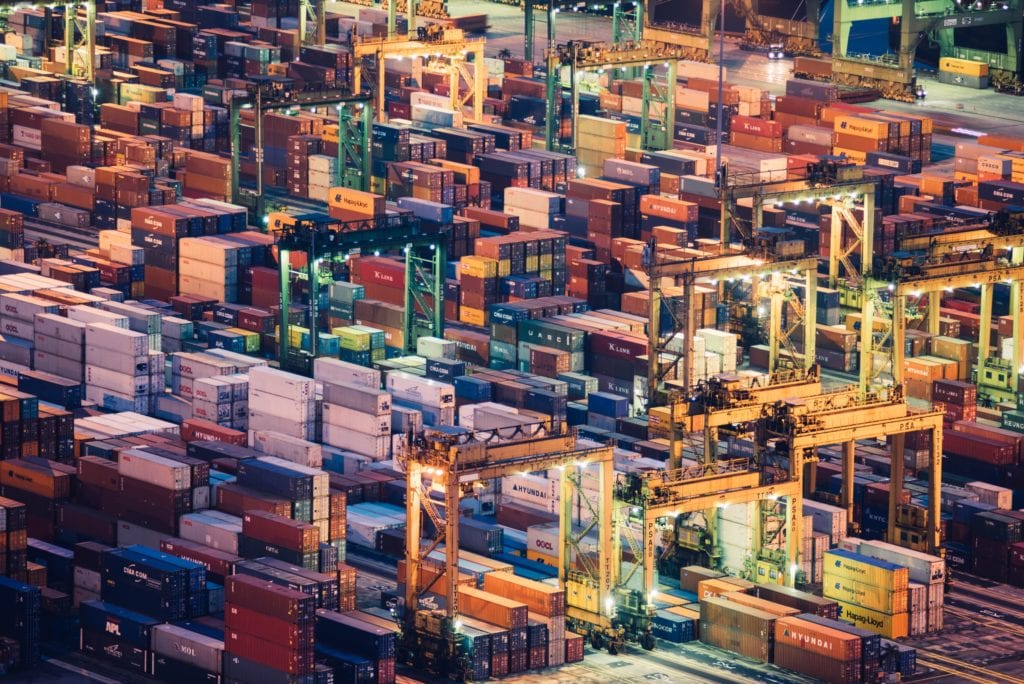
Understanding the Global Container Shortage
The shipping industry is facing a significant problem brought on by the effects of the COVID-19 pandemic. This problem cascades through the supply chain and is disrupting trade on a global scale.
Shipping containers have ended up stranded in inland depots and cargo ports or on board vessels. These containers have been rendered practically unusable and contribute to a global container shortage that grips international trade.
Let’s look a little deeper at how this container shortage began.
The Pandemic Short Circuits Supply
As the pandemic spread from China, many countries around the globe instituted lockdowns in response. Businesses temporarily closed as the world tried to figure out this new virus. These closures crippled much of the movement within the shipping industry. Many containers were stranded in local ports without a workforce to process them – rendering them essentially unusable.
On top of this, carriers have also been reducing the number of vessels at sea. Meanwhile, much-needed containers sat.
China and Other Asian Countries Recover First
As this situation unfolded, Asian countries recovered faster than their western counterparts from the pandemic. China restarted its exports, while the west continued to deal with reductions in production, a smaller workforce, and continued virus-related restrictions.
Because of this, the Asian countries were using whatever containers they had left to send products to Europe and North America. These containers were not returning to China at a fast enough clip to be helpful. Border restrictions and workforce reductions in these ports and cargo depots across the continent continued contributing to the issues.
For every 100 containers that show up in North America, only 40 make their way back to Asia. That means 60 percent of the containers shipped to North America are currently accumulating in places where they remain unusable. When you stop to think about how much cargo ships to the west from China, these numbers are truly staggering.
In a typical year, China ships on average 900,000 twenty-foot equivalent units (TEUs) in a month – and that number is up compared to the same time last year. The demand for goods from the US and other western countries does not appear to be slowing down.
Container Rates Increasing
Shipping rates have dramatically increased on Asia to North American routes as the imbalance increases. According to the Independent Commodity Intelligence Services and the Drewry World Container Index, rates continue to raise. Eastbound container freight rates have more than tripled since the pandemic began.
Low Container Production Rates Exacerbate the Shortage
Production of new containers has been woefully low, which contributes to the trade imbalance and container shortage. Production rates were already down in 2019, and then demand suffered at the beginning of 2020. More containers are now scrapped than are built, adding to an inventory shortage. It remains to be seen when new container production will begin to normalize the numbers.
Meanwhile, manufacturers can charge a premium for new containers because of the shortage. New containers from Chinese manufacturers can cost as much as $2,500, according to Splash 247, far more than the $1,600 price tag just last year.
We Need Available Containers
As the effects of the shortage drag on, shipping demand continues to outpace the current container supply. Because of this, companies must book their cargo as early as possible. Actions are being taken at high levels to resolve the container shortage, but it could take many more months.
Even if it does come to a resolution, freight rates could remain high.
Shipping with Dedola
Over the years, DGL has served over 100 industries, 20,000 customers and has transported over 1 million full container loads.
DGL’s mission is to optimize your supply chain. We provide industry-leading customer service and give you access to unparalleled logistics expertise so you can focus on achieving greater success.
You deserve a logistics provider that’s customer-focused and reliable. Switch to DGL and discover the Dedola Difference.
For a free consultation to discuss your freight forwarding needs, call 800-516-3099 today.
WATCH: Informational Videos on Who We Are, What We Do, and the Dedola Difference


